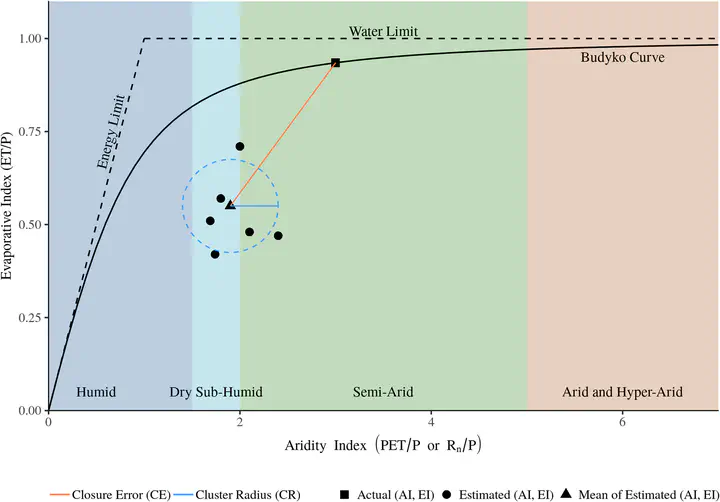Budyko-Based Long-Term Water and Energy Balance Closure in Global Watersheds From Earth Observations
Abstract
Earth observations offer potential pathways for accurately closing the water and energy balance of watersheds, a fundamental challenge in hydrology. However, previous attempts based on purely satellite-based estimates have focused on closing the water and energy balances separately. They are hindered by the lack of estimates of key components, such as runoff. Here, we posit a novel approach based on Budyko’s water and energy balance constraints. The approach is applied to quantify the degree of long-term closure at the watershed scale, as well as its associated uncertainties, using an ensemble of global satellite data sets. We find large spatial variability across aridity, elevation, and other environmental gradients. Specifically, we find a positive correlation between elevation and closure uncertainty, as derived from the Budyko approach. In mountainous watersheds the uncertainty in closure is 3.9 ± 0.7 (dimensionless). Our results show that uncertainties in terrestrial evaporation contribute twice as much as precipitation uncertainties to errors in the closure of water and energy balance. Moreover, our results highlight the need for improving satellite-based precipitation and evaporation data in humid temperate forests, where the closure error in the Budyko space is as high as 1.1 ± 0.3, compared to only 0.2 ± 0.03 in tropical forests. Comparing the results with land surface model-based data sets driven by in situ precipitation, we find that Earth observation-based data sets perform better in regions where precipitation gauges are sparse. These findings have implications for improving the understanding of global hydrology and regional water management and can guide the development of satellite remote sensing-based data sets and Earth system models..
